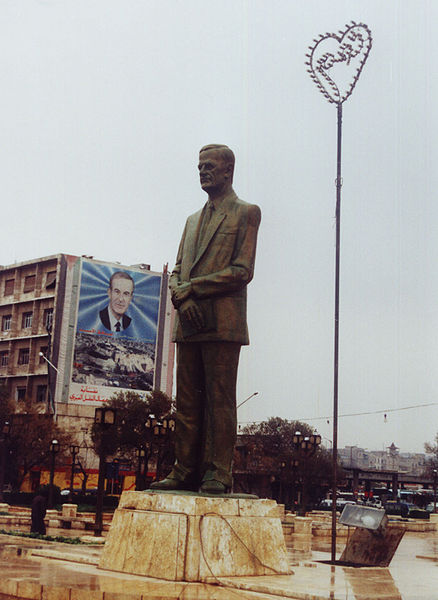It is difficult to talk about this, but I think we should speak up to protect the lives of other human beings. Being the son of a man who was brutally tortured by Syrian security forces, al-mukhabarat, for standing up for his basic human rights and criticizing the regime, I found it very difficult to take the regime seriously when it denied engaging in acts of systematic torture. Some of the torture methods include "Falq haflat al-istiqbal or ''reception party'' that insult, harass and beat detainees on arrest, al-Kursi al-Almani or ''the German Chair', Sollom or "ladder", and keeping the prisoner in a room with no light for few days, then taking the person out and forcing him/her to look into the sun.
Assad stated in an interview, "There was no command to kill or be brutal." He added, "We don't kill our people... no government in the world kills its people, unless it's led by a crazy person." Recently, Amnesty International released documentation evidencing more than 30 different types of torture currently practiced by the Syrian authorities against Syrian detainees. The 45-page report contained information gathered as a result of interviews of hundreds of detainees. Some of the torture tactics mentioned in the papers were, Hafet al-istiqhba (reception party), dolab (the tire) or Falqha which entails the lashing of the soles of the feet while the detainee is tied, slapped and/or beaten, sometimes with boots. Another common method is called Kursi al Almani or ''The German Chair'' which entails inflicting tremendous pain on the neck and back. Another is called, Sollom (ladder), according to which they tie the prisoner to a ladder and continuously pushed the ladder over so that he would fall directly onto his back.
 These are only a few of the torture methods used to extract information or to silence any individuals who disagree with the regime. Other methods of torture that were recently documented by Amnesty International include Shabeh. Accordingly, the detainee is hanged from his wrist for long periods of time and sometimes beaten, crucified, forced into stressful positions, tortured by electric shock, is forced to watch other people being tortured, have cigarettes stubbed out on the body, sexual violence, electric chair, threatening that the detainee will be executed, being stabbed or cut, and keeping the prisoners with dead or dying prisoners. These are only some of the torture methods being practiced in the 21st century. It may also be worth mentioning that the Syrian regime is a signatory to the United Nations Convention against Torture.
These are only a few of the torture methods used to extract information or to silence any individuals who disagree with the regime. Other methods of torture that were recently documented by Amnesty International include Shabeh. Accordingly, the detainee is hanged from his wrist for long periods of time and sometimes beaten, crucified, forced into stressful positions, tortured by electric shock, is forced to watch other people being tortured, have cigarettes stubbed out on the body, sexual violence, electric chair, threatening that the detainee will be executed, being stabbed or cut, and keeping the prisoners with dead or dying prisoners. These are only some of the torture methods being practiced in the 21st century. It may also be worth mentioning that the Syrian regime is a signatory to the United Nations Convention against Torture.

On the other hand, the Assad regime does not only target individuals in isolation but rather employs methods of torture in a systematic way. Torture has also been used by the regime to consolidate and reinforce the power it gained four decades ago. First, the individuals' body is violated. Then the torturer attempts to use the body of the detainee to dehumanize, humiliate, and degrade the individual. Essentially, the goal is to alienate the person from him or herself. After invading and taking control of detainees' body, the torturer begins the process of possessing the mind of the detainee.
Torture of individuals is practiced by the Syrian regime in order to ultimately affect society as a whole. Often times, the Syrian regime will return the tortured body to his/her family. Doing so instills a profound sense of fear and terror in anyone associated with the torture victim, ultimately deterring anyone considering engaging in acts the regime does not approve of. This message of course reaches not only the extended family but the neighborhood as well. My point is, majority of Syrian society has suffered a collective anxiety and trauma that must be dealt with eventually, particularly for the thousands of detainees being held by the regime.

This kind of systematic torture may help an autocratic regime maintain its grip on power for a long period of time if those standing up to it are few and far between. However, how much longer can the regime sustain itself on gruesome tactics when the numbers of resistors have grown exponentially and will only continue to increase? When this many people stand in solidarity in demand of the basic values of justice, rule of law, and democracy, it will be hard for Assad's regime to maintain its power for much longer.
This article was first published in Haaretz. Images: Wikimedia Commons
